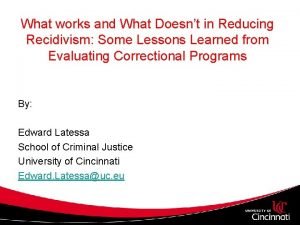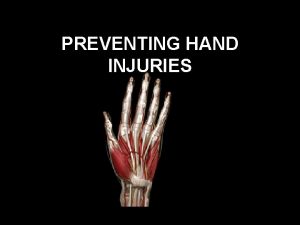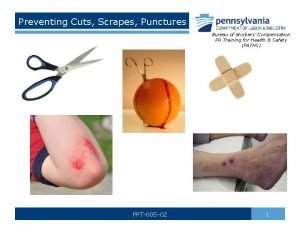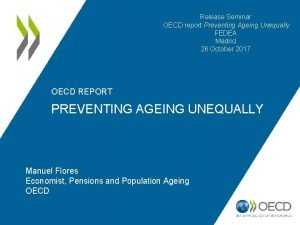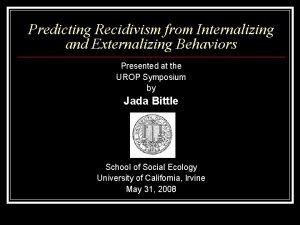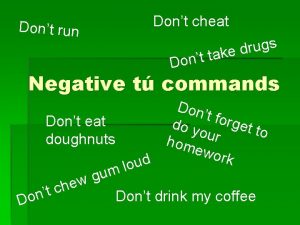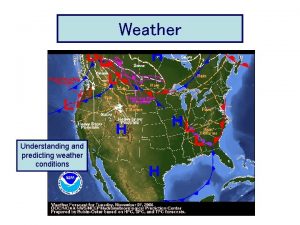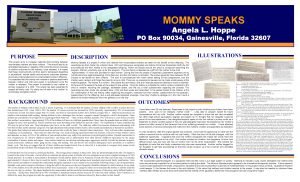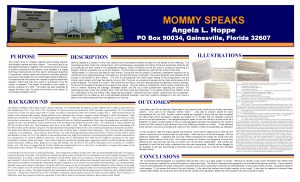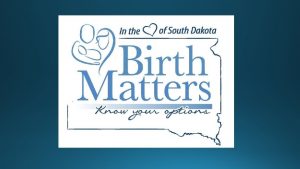Mommy Dont Go Predicting and preventing recidivism of



























- Slides: 27

Mommy Don’t Go Predicting and preventing recidivism of mothers in the Illinois Criminal Justice System Team N 4: Markus Kessler, Sybille Louis, Him Mistry, and Jessica Raithel Preliminary Draft - Do Not

Research Question What are the predictors of mothers in Illinois re-entering the criminal justice system after exit? Preliminary Draft - Do Not

Background: Female Inmates Have Specific Needs § Women in U. S. prisons has increased by more than 700%, outpacing men by more than 50% § Women offenders primarily commit property and drug offenses vs. more than half of men who commit violent offenses § Women state prisoners exhibit mental health problems more often than men § Women prisoners earn lower monthly incomes than men Sources: National Resource Center on Justice Involved Women, 2016; Carson, 2015; James & Glaze, 2006; The Sentencing Project, 2007 Preliminary Draft - Do Not

Background: Re-Entry and Child Welfare § Two-thirds of women in state prisons are mothers of a minor child § Children of incarcerated parents are at a higher risk of CPS involvement and later criminal involvement, mental and physical health issues § Parental involvement leads to a higher risk of foster care placement Sources: The Sentencing Project, 2015; Dallaire, Zeman, & Thrash (2015); Miller, Orellana, Johnson, Krase, & Anderson-Nathe (2013); Andersen & Wildeman (2014); Gifford et al. (2016); Muftic & Smith (2015) Preliminary Draft - Do Not

Background: Neighborhood-level factors § Neighborhood level factors influence physical health, mental health, substance use, and criminal behavior § Access to neighborhood resources, networks and supports impacts reentry outcomes Sources: Pickett & Pearl, 2001; Ross & Mirowsky, 2001; Mair, Diez-Roux, & Galea, 2008; Sampson et al. , 2002; Stahler, Gerald J. et al. , 2013; Kubrin & Stewart, 2006; Rose & Clear, 1998; Kirk, 2009 Preliminary Draft - Do Not

Logic Model Target Population Inputs Activities Outputs Shortterm Mediumterm Longterm Outcomes Improved access to concrete supports for women recently released from prison Decrease in recidivism Decreased child welfare involvement Job training Mothers in Illinois re-entering the criminal justice system after exit Expenditures on social services (direct and inkind) Programmatic oversight Counseling Housing services Substance abuse treatments Development of new services that address risk factors of recidivism Preliminary Draft - Do Not

Overall Approach § Time-frame: Exiters between 2005 through 2013 § Identify population of mothers who have exited jail and their attributes § Identify neighborhood-level characteristics and access to social services § Construct predictors at the individual- and neighborhood-level § Build and train the predictive model Preliminary Draft - Do Not

Data Sources Individual-level predictors Neighborhood-level predictors* § Illinois Department of Correction (admission and exit data) Length of stay, gang affiliation, substance use, # of previous incarcerations, education level, race, sex, number of children, age, program involvement while in prison, recidivism flag, charge class § Illinois Department of Labor Employment flag, total wages, # of quarters employed, # of jobs per quarter § Illinois Department of Labor Number of jobs, firms, and total wages by zip code and industry § American Community Survey (ACS) Total households, household demographics, poverty level § Social Services Number of social service and substance abuse facilities in zip code by type *aggregated and linked to individuals via zip code, as well as distance analysis (zip codes provided in Parole data) Preliminary Draft - Do Not

Contributions § Descriptive analysis of sample of mothers in prison and characteristics § Spatial analysis using neighborhood characteristics § Combining data on employment, proximity analysis on access to social services and employment deriving distance criteria § Machine Learning: Building a model to predict likelihood of recidivism in population of mothers based on the predictors identified Preliminary Draft - Do Not

Distribution of Sample = Concentration in Cook County Preliminary Draft - Do Not

Distribution of Social Services = Concentration in Cook County Preliminary Draft - Do Not

Distribution of Employers = Concentration in Cook County Preliminary Draft - Do Not

Distribution of Jobs = Concentration in Cook County Preliminary Draft - Do Not

Description of Sample Women who exited 2005 -2013: 18, 491 Women with children who exited 2005 -2013: 14, 861 Women with children who exited 2005 -2013 with zip code: 8, 559* Sample *1. 6% of the sample was dropped during some analyses due to other missing data Preliminary Draft - Do Not

Average Age: 37 Race: 52% Black; 42% white; 6% Hispanic Race 100% 90% 80% 70% 60% 52% 50% 42% 40% 30% 20% 6% 10% 0% Black White Hispanic Preliminary Draft - Do Not 1% 0% Native-American Asian

More than half (62%) of the women are single Marital Status 100% 90% 80% 70% 62% 60% 50% 40% 30% 16% 20% 14% 10% 0% 5% Single Married Divorced Preliminary Draft - Do Not Separated (X) 2% Widowed

Less than half of the women (48%) have less than a high school diploma Preliminary Draft - Do Not

42% of women are being held for the longest crime category (Class 4) Holding Crime Class 100% 90% 80% 70% 60% 50% 42% 40% 30% 23% 17% 20% 12% 10% 0% 4% Class 4 Class 3 Class 2 Series 1 Preliminary Draft - Do Not Class 1 X 1% Murder

Non-recidivists earn more wages than recidivists across main race categories Preliminary Draft - Do Not

Machine Learning: Method § Assessed and fit models based on recursive feature elimination (RFE) ü Chose the optimal number of features and which features to include ü Compared models using the area under the curve (AUC) measure § Once the type of model was chosen, compared models with just individual characteristics and individual + neighborhood level characteristics using RFE and assessing with AUC Preliminary Draft - Do Not

Logistic regression performed best for AUC Preliminary Draft - Do Not

Neighborhood features had more explanatory power than individual features Preliminary Draft - Do Not

Recall is most informative due to low occurrence of recidivism Individual Only Individual + Neighborhood Accuracy 0. 92 Recall 0. 38 0. 39 Precision 0. 99 0. 94 Preliminary Draft - Do Not

Top Features from Individual + Neighborhood Model Employment-related Features Neighborhood Features § § § § Average Wages per Quarter in the Community (2 yr) (+) Average Wages per Quarter in the Community (1 yr) (+) Total Wages (1 yr) (-) Total Wages (2 yrs) (-) Average Number of Jobs per Qtr in Community (2 yr) (-) Percent of Qtrs in the Community Spent Employed (2 yr) (-) DOC-related Features § § § § Age at Exit (-) Race: White (+) Exit Quarter (-) Citizen (-) High School Education or Higher (-) Number of Kids (-) Number of Incarcerations (+) Number of Incarcerations in Illinois (+) Length of Current Incarceration (-) Holding Charge Class 4 (+) Holding Charge Class 2 (-) Holding Charge Class 1 (-) Drug Use: Heroin (+) Sex Offender Status (+) Admission Directly from Court (-) Exit Type: Released to Supervision (-) § § § Preliminary Draft - Do Not Number of Employers Missing Industry in Zip Code (+) Number of Wholesale Trade Employers in Zip Code (-) Number of Real Estate Employers in Zip Code (-) Number of Detox Centers in Zip Code (+) Number of Administrative/Support/Waste Management/ Remediation Services Employers in Zip Code (-) Number of Accommodations/Food Employers in Zip Code (-) Number of Arts, Recreation, and Entertainment Employers in Zip Code (+) Number of Public Administration Employers in Zip Code Number of Finance Employers in Zip Code (+) Number of Other Employers in Zip Code (+) Number of Education Employers in Zip Code (+) Number of Transportation and Warehouse Employers in Zip Code (+) Percent of Population who is White in Zip Code (-)

Top Features from Individual + Neighborhood Model Employment-related Features Neighborhood Features § § § § Average Wages per Quarter in the Community (2 yr) (+) Average Wages per Quarter in the Community (1 yr) (+) Total Wages (1 yr) (-) Total Wages (2 yrs) (-) Average Number of Jobs per Qtr in Community (2 yr) (-) Percent of Qtrs in the Community Spent Employed (2 yr) (-) DOC-related Features § § § § Age at Exit (-) Race: White (+) Exit Quarter (-) Citizen (-) High School Education or Higher (-) Number of Kids (-) Number of Incarcerations (+) Number of Incarcerations in Illinois (+) Length of Current Incarceration (-) Holding Charge Class 4 (+) Holding Charge Class 2 (-) Holding Charge Class 1 (-) Drug Use: Heroin (+) Sex Offender Status (+) Admission Directly from Court (-) Exit Type: Released to Supervision (-) § § § Preliminary Draft - Do Not Number of Employers Missing Industry in Zip Code (+) Number of Wholesale Trade Employers in Zip Code (-) Number of Real Estate Employers in Zip Code (-) Number of Detox Centers in Zip Code (+) Number of Administrative/Support/Waste Management/ Remediation Services Employers in Zip Code (-) Number of Accommodations/Food Employers in Zip Code (-) Number of Arts, Recreation, and Entertainment Employers in Zip Code (+) Number of Public Administration Employers in Zip Code Number of Finance Employers in Zip Code (+) Number of Other Employers in Zip Code (+) Number of Education Employers in Zip Code (+) Number of Transportation and Warehouse Employers in Zip Code (+) Percent of Population who is White in Zip Code (-)

Caveats DOC/Parole data § § Missing data, especially zip codes Accuracy of addresses Some relevant data not collected (e. g. age of the kids) Data generating process -- self-reporting of most data Employer data § § § Over-reporting due to employer name changes and chances of being counted multiple times Discrepancy in location reported (location of headquarters versus actual employment location) Quarterly reported wages, but not hours/weeks Inferential goal § Underlying inference is aimed at improving child and family wellbeing outcomes Preliminary Draft - Do Not

Next Steps § § § Include additional community-level factors or other public data sources (including outside the ADRF) that could be helpful predictors Additional geospatial analyses to control for density of services and people in Chicago versus the rest of the state Research on best practice interventions and supports for addressing identified risk factors of our target population Service gap analysis in communities with high level of risk factors Translate/replicate for New York City or other localities to contextualize findings and interventions Preliminary Draft - Do Not
 What works and doesn't in reducing recidivism download
What works and doesn't in reducing recidivism download Dont ask dont tell political cartoon
Dont ask dont tell political cartoon Dont laugh at me dont call me names
Dont laugh at me dont call me names Syarat multiple recidivism
Syarat multiple recidivism Message for unborn baby
Message for unborn baby Extremity restraint
Extremity restraint In figure 1 what facial expression did mommy lenny show
In figure 1 what facial expression did mommy lenny show Veronika 50 guys
Veronika 50 guys Chapter 24 lesson 2 preventing and treating stds
Chapter 24 lesson 2 preventing and treating stds Chapter 9 lesson 2 resolving conflicts
Chapter 9 lesson 2 resolving conflicts Chapter 14 promotion of safety
Chapter 14 promotion of safety Chapter 9 resolving conflicts and preventing violence
Chapter 9 resolving conflicts and preventing violence Chapter 13:2 preventing accidents and injuries
Chapter 13:2 preventing accidents and injuries Bahasa inggris disusun oleh
Bahasa inggris disusun oleh The aim of previewing is
The aim of previewing is The evolution of crm is reporting analyzing and predicting
The evolution of crm is reporting analyzing and predicting Di vs bis
Di vs bis Chapter 20 preventing kitchen accidents
Chapter 20 preventing kitchen accidents Chapter 16 preventing infection
Chapter 16 preventing infection Preventing kitchen accidents worksheet
Preventing kitchen accidents worksheet Johannes volkelt empathy theory examples
Johannes volkelt empathy theory examples Chapter 4 preventing injuries through fitness
Chapter 4 preventing injuries through fitness Chapter 15 preventing infection
Chapter 15 preventing infection Preventing hand injuries
Preventing hand injuries Preventing cuts
Preventing cuts Preventing ageing unequally
Preventing ageing unequally Which is mainly responsible for preventing erosion
Which is mainly responsible for preventing erosion Predicting products of chemical reactions
Predicting products of chemical reactions
